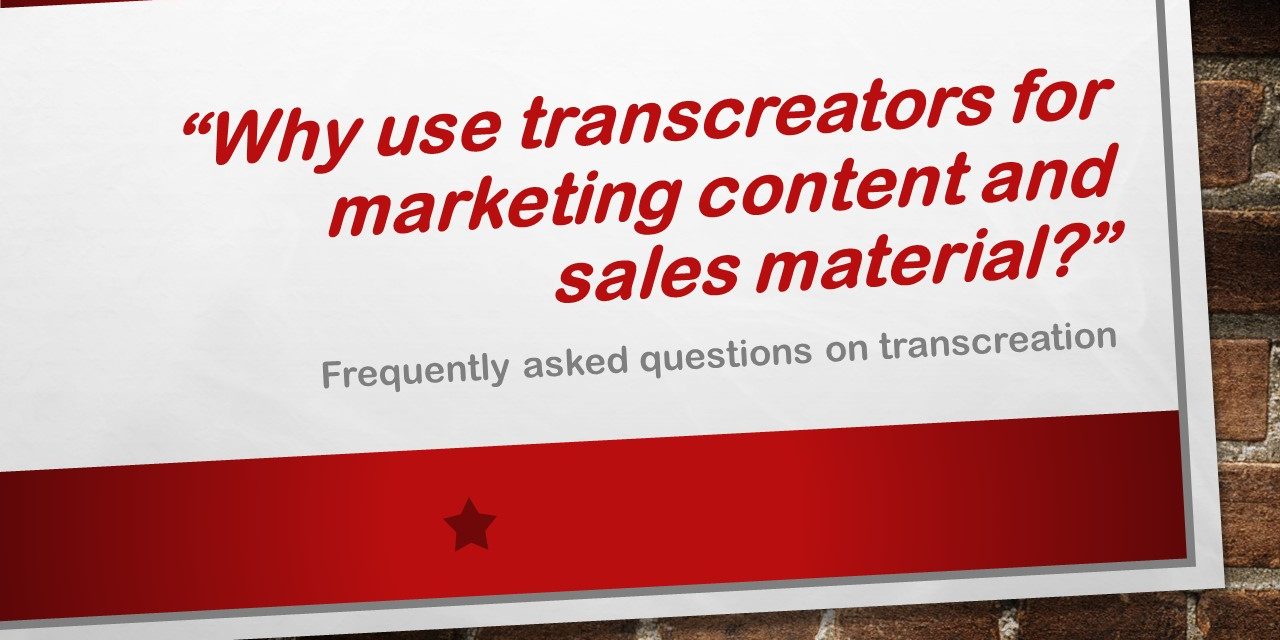Over time I have addressed many questions asked by people in charge of translations at both small and large companies. The following question is representative of issues that companies are often faced with in the context of “marketing translations”, and so I am reproducing it here:
Question:
“He is such a reliable translator of our technical documentation, he knows our products really well, so we thought he would be a good fit for our marketing material too. But sadly, the result was not up to par. Why? We don’t understand …”
Answer:
This is a classic. Companies that call me for help often tell me they get translations that are stilted, unnatural, clumsy, awkward, sound translated, lack the right feel, sound as if the translator didn’t really care.
In this particular case the company that contacted me with the above question had taken high-gloss sales material and had asked, and paid, their regular translation provider for a translation. And so, not surprisingly, they ended up with a translation. Their French subsidiary told them what it thought of it, in unmistakable French.
What had happened? Why were the French so upset? Was the translation poorly done?
No, it wasn’t. As a translation it wasn’t poorly done. It was accurate in terms of technical terminology, it was complete, nothing had been overlooked, misunderstood or omitted, and the grammar and spelling were flawless. It had passed all the quality checks that a translation needs to pass. But it lacked that punch. It didn’t fly. It just wasn’t right. The French called it clumsy, taxing to read, and not at all persuasive. It was complete and grammatically correct but wouldn’t help the salespeople sell.
The problem wasn’t the translation as such.
The problem was that the client had requested a translation but had expected something that a copywriter might have written. In short: They had expected a transcreation.
“All right,” you say, “so why didn’t they ask for a transcreation, if a transcreation was what they needed?” Why indeed? The people at this company — like most people — hadn’t ever heard of transcreation. They were unaware that sales and promotional material can’t just be translated the same way that their technical manuals or legal documents were translated. They didn’t know that their carefully crafted marketing material needed to be handled differently.
And why should they be expected to know? They weren’t experts in languages. They were experts in producing heavy-duty industrial equipment. The client wasn’t even the problem. The problem was the reliable technical translator colleague who either didn’t know, or hadn’t explained it to the client, or maybe knew, but wasn’t able to come up with a transcreation. Translators without proper transcreation training won’t generally be able to.
Or maybe the problem was the project manager at the language service company the client had retained — project managers, though they are supposed to be the client-advisory experts, are often unaware of the need for transcreative work and hence fail to enlighten their end client.
The takeaway of the story?
If you request a translation, and pay for a translation, you get a translation.
If what you actually need is a transcreation, you should contact a transcreator. Or maybe read the book. Or check out my courses.
The above question and answer is just one of many that you will find in Nina’s book “Get fit for the future of transcreation“.







